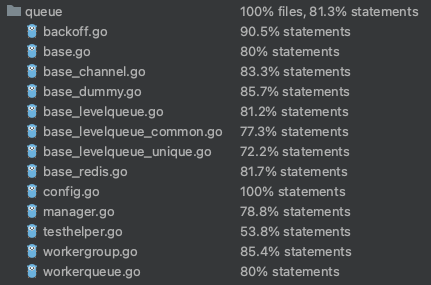It does not pollute the output because they go to sqlite-log/gitea.log
and it may provide clues for debugging. When trying to figure out a
problem in production, Debug is likely to be used but in a development
environment a very fine grain log is the most useful. If that's really
too much noise, the lines can be trimmed by removing all those with [T].
(cherry picked from commit 666b02eb9d)
(cherry picked from commit b69e4d3058)
(cherry picked from commit 0c1aecd7ec)
(cherry picked from commit 0304e41345)
(cherry picked from commit 4bcc7e02ce)
(cherry picked from commit 98364235f2)
(cherry picked from commit ca465e97c1)
(cherry picked from commit 653045ade1)
(cherry picked from commit 9ca2e644ab)
(cherry picked from commit 47c8a05b37)
(cherry picked from commit 4235d929ed)
(cherry picked from commit 10541c4b1c)
The setting `MAILER_TYPE` is deprecated.
According to the config cheat sheet, it should be `PROTOCOL`.
---------
Co-authored-by: Lunny Xiao <xiaolunwen@gmail.com>
# ⚠️ Breaking
Many deprecated queue config options are removed (actually, they should
have been removed in 1.18/1.19).
If you see the fatal message when starting Gitea: "Please update your
app.ini to remove deprecated config options", please follow the error
messages to remove these options from your app.ini.
Example:
```
2023/05/06 19:39:22 [E] Removed queue option: `[indexer].ISSUE_INDEXER_QUEUE_TYPE`. Use new options in `[queue.issue_indexer]`
2023/05/06 19:39:22 [E] Removed queue option: `[indexer].UPDATE_BUFFER_LEN`. Use new options in `[queue.issue_indexer]`
2023/05/06 19:39:22 [F] Please update your app.ini to remove deprecated config options
```
Many options in `[queue]` are are dropped, including:
`WRAP_IF_NECESSARY`, `MAX_ATTEMPTS`, `TIMEOUT`, `WORKERS`,
`BLOCK_TIMEOUT`, `BOOST_TIMEOUT`, `BOOST_WORKERS`, they can be removed
from app.ini.
# The problem
The old queue package has some legacy problems:
* complexity: I doubt few people could tell how it works.
* maintainability: Too many channels and mutex/cond are mixed together,
too many different structs/interfaces depends each other.
* stability: due to the complexity & maintainability, sometimes there
are strange bugs and difficult to debug, and some code doesn't have test
(indeed some code is difficult to test because a lot of things are mixed
together).
* general applicability: although it is called "queue", its behavior is
not a well-known queue.
* scalability: it doesn't seem easy to make it work with a cluster
without breaking its behaviors.
It came from some very old code to "avoid breaking", however, its
technical debt is too heavy now. It's a good time to introduce a better
"queue" package.
# The new queue package
It keeps using old config and concept as much as possible.
* It only contains two major kinds of concepts:
* The "base queue": channel, levelqueue, redis
* They have the same abstraction, the same interface, and they are
tested by the same testing code.
* The "WokerPoolQueue", it uses the "base queue" to provide "worker
pool" function, calls the "handler" to process the data in the base
queue.
* The new code doesn't do "PushBack"
* Think about a queue with many workers, the "PushBack" can't guarantee
the order for re-queued unhandled items, so in new code it just does
"normal push"
* The new code doesn't do "pause/resume"
* The "pause/resume" was designed to handle some handler's failure: eg:
document indexer (elasticsearch) is down
* If a queue is paused for long time, either the producers blocks or the
new items are dropped.
* The new code doesn't do such "pause/resume" trick, it's not a common
queue's behavior and it doesn't help much.
* If there are unhandled items, the "push" function just blocks for a
few seconds and then re-queue them and retry.
* The new code doesn't do "worker booster"
* Gitea's queue's handlers are light functions, the cost is only the
go-routine, so it doesn't make sense to "boost" them.
* The new code only use "max worker number" to limit the concurrent
workers.
* The new "Push" never blocks forever
* Instead of creating more and more blocking goroutines, return an error
is more friendly to the server and to the end user.
There are more details in code comments: eg: the "Flush" problem, the
strange "code.index" hanging problem, the "immediate" queue problem.
Almost ready for review.
TODO:
* [x] add some necessary comments during review
* [x] add some more tests if necessary
* [x] update documents and config options
* [x] test max worker / active worker
* [x] re-run the CI tasks to see whether any test is flaky
* [x] improve the `handleOldLengthConfiguration` to provide more
friendly messages
* [x] fine tune default config values (eg: length?)
## Code coverage:

* Clean the "tools" directory. The "tools" directory contains only two
files, move them.
* The "external_renderer.go" works like "cat" command to echo Stdin to
Stdout , to help testing.
* The `// gobuild: external_renderer` is incorrect, there should be no
space: `//gobuild: external_renderer`
* The `fmt.Print(os.Args[1])` is not a well-defined behavior, and it's
never used.
* The "watch.sh" is for "make watch", it's somewhat related to "build"
* After this PR, there is no "tools" directory, the project root
directory looks slightly simpler than before.
* Remove the legacy "contrib/autoboot.sh", there is no
"gogs_supervisord.sh"
* Remove the legacy "contrib/mysql.sql", it's never mentioned anywhere.
* Remove the legacy "contrib/pr/checkout.go", it has been broken for
long time, and it introduces unnecessary dependencies of the main code
base.